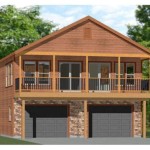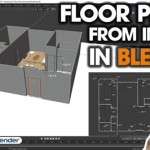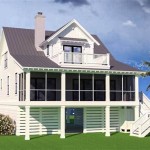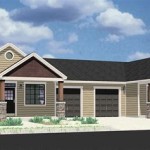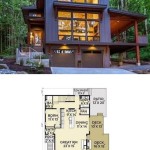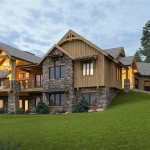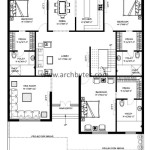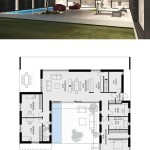2-Story House Plans with 4 Bedrooms Upstairs: A Guide
For growing families and those who appreciate a clear separation between living and sleeping spaces, 2-story house plans with 4 bedrooms upstairs represent a practical and popular design choice. This configuration offers advantages in terms of space utilization, privacy, and potentially, cost-effectiveness compared to sprawling single-story designs. Understanding the nuances of these plans is crucial for homeowners looking to embark on building or renovating a home.
These house plans generally feature the primary living areas on the ground floor, including the kitchen, living room, dining room, and often a home office or additional flexible space. The upper floor is dedicated to bedrooms, providing a quiet and private retreat for family members. This separation is particularly beneficial for families with young children or those who prefer a distinct boundary between daily activities and rest.
The increasing desire for this specific layout stems from a variety of factors, including efficient land use, the ability to maximize natural light on both floors, and the potential for creative architectural design. By stacking living spaces vertically, homeowners can achieve a substantial living area without requiring a large property footprint. This is particularly attractive in urban or suburban areas where land costs are high.
Key Considerations for 2-Story 4-Bedroom Upstairs Designs
Planning a 2-story home with 4 bedrooms upstairs involves careful consideration of several key factors. These include the overall square footage, the layout of both floors, the placement of staircases, and the specific needs and preferences of the homeowners. Neglecting these aspects can lead to a less functional and enjoyable living space. The following points represent critical areas of focus.
Spatial Planning and Room Dimensions: The total square footage of the house significantly impacts the size and layout of each room. A smaller overall footprint will necessitate compromises in room dimensions, potentially leading to cramped living spaces. Conversely, a larger footprint allows for more generous room sizes and greater flexibility in design. Careful consideration must be given to furniture placement, traffic flow, and the overall feeling of spaciousness within each room. For example, bedrooms should be adequately sized to accommodate beds, dressers, and potentially desks or seating areas, without feeling overcrowded. The master bedroom, in particular, should offer ample space and perhaps include a walk-in closet and ensuite bathroom.
The layout of the ground floor should complement the upstairs bedroom configuration. An open-concept design may be desired for the living and dining areas, promoting a sense of connection and facilitating social interaction. However, it's also important to consider the need for separate, quieter spaces, such as a home office or a formal living room. The placement of the kitchen is also crucial, as it often serves as the central hub of the home. Proximity to the dining area and access to the backyard or outdoor living space are important considerations.
Staircase Design and Placement: The staircase is a critical element in a 2-story home, serving not only as a functional means of accessing the upper floor but also as a significant design feature. The location of the staircase affects the flow of traffic throughout the house and can impact the overall feel of both floors. A centrally located staircase can create a sense of grandeur and connect the living spaces, while a staircase tucked away in a corner may offer more privacy. The design of the staircase itself is also important. A straight staircase is the most space-efficient option, while a curved or spiral staircase can add visual interest but may require more space and be more expensive to construct. The design of the staircase should also consider safety, particularly for families with young children or elderly individuals. Features such as handrails and adequate lighting are essential.
Bathroom Allocation and Design: With four bedrooms upstairs, careful consideration must be given to the number and layout of bathrooms. A common arrangement is to have two bathrooms on the upper floor: a master ensuite connected to the master bedroom and a shared bathroom for the other three bedrooms. The shared bathroom should be strategically located to provide easy access from all bedrooms. An alternative arrangement is to have a jack-and-jill bathroom, connecting two of the bedrooms directly. This can be a good option for siblings sharing a bathroom. In addition to the number of bathrooms, the design and features of each bathroom are also important. The master ensuite should ideally include a separate shower and bathtub, as well as ample counter space and storage. The shared bathroom should be designed to accommodate multiple users simultaneously, with features such as double sinks and separate toilet areas.
Advantages of the 4-Bedroom Upstairs Layout
Choosing a 2-story house plan with 4 bedrooms upstairs offers several advantages over other layouts. These advantages relate to space utilization, noise control, and potential cost savings. By concentrating sleeping quarters on the second floor, homeowners can create a more peaceful and private environment.
Efficient Use of Land: A primary advantage is the efficient use of land. By stacking living spaces vertically, a 2-story home can achieve a larger living area on a smaller property footprint. This is particularly beneficial in urban and suburban areas where land is scarce and expensive. A single-story home with the same square footage would require a significantly larger lot, increasing the overall cost of the property. The smaller footprint also allows for more outdoor space, such as a larger backyard or patio.
Enhanced Privacy and Noise Control: Separating the sleeping areas from the living areas provides enhanced privacy and noise control. The upper floor becomes a dedicated sanctuary for rest and relaxation, away from the noise and activity of the ground floor. This is particularly beneficial for families with young children or those who work from home. The separation allows for activities to occur on the ground floor without disturbing those who are sleeping or working upstairs. Conversely, activities upstairs are less likely to disrupt those on the ground floor. The use of soundproofing materials in the construction of the walls and floors can further enhance noise control.
Potential Cost Savings: While the initial construction cost of a 2-story home may be slightly higher than a single-story home of the same square footage, there are potential long-term cost savings. The smaller footprint reduces the amount of foundation and roofing required, which can offset some of the additional cost of framing the second story. Additionally, a 2-story home may be more energy-efficient, as the smaller exterior surface area reduces heat loss in the winter and heat gain in the summer. This can lead to lower heating and cooling bills over the long term. Property taxes are also potentially lower due to the smaller land area.
Design Considerations for Each Room
Beyond the overall layout, specific design considerations for each room are crucial to maximizing functionality and comfort. The needs of each family member, lifestyle preferences, and future adaptability should all be factored into the design process. Paying close attention to these details ensures a well-rounded and enjoyable living experience.
Master Bedroom Suite: The master bedroom suite should be designed as a private retreat, offering a comfortable and relaxing space for the homeowners. It should ideally include a spacious bedroom, a walk-in closet, and an ensuite bathroom. The bedroom should be large enough to accommodate a king-size bed, dressers, and potentially a seating area. The walk-in closet should provide ample storage space for clothing and accessories. The ensuite bathroom should include a separate shower and bathtub, as well as double sinks and ample counter space. The master bedroom suite should be located in a quiet area of the house, away from the main living areas and other bedrooms.
Children's Bedrooms: The children's bedrooms should be designed to be functional and adaptable, catering to the changing needs of growing children. They should be large enough to accommodate a bed, dresser, desk, and potentially a play area. They should also have ample closet space for clothing and toys. The bedrooms should be designed to be easily configurable, allowing for furniture to be rearranged as the children's needs evolve. Consider incorporating built-in storage solutions to maximize space and keep the rooms organized. The location of the children's bedrooms should be near the shared bathroom for easy access.
Shared Bathroom: The shared bathroom should be designed to accommodate multiple users simultaneously, with features such as double sinks and separate toilet areas. It should include a shower and bathtub combination, as well as ample storage space for toiletries and towels. The bathroom should be well-lit and ventilated to prevent moisture buildup. Consider using durable and easy-to-clean materials to minimize maintenance. The location of the shared bathroom should be easily accessible from all of the children's bedrooms.
Ground Floor Living Areas: The ground floor living areas should be designed to be open and inviting, promoting a sense of connection and facilitating social interaction. The kitchen should be the central hub of the home, with easy access to the dining area and living room. The living room should be spacious and comfortable, with ample seating and a focal point such as a fireplace or entertainment center. Consider incorporating large windows or sliding glass doors to bring in natural light and connect the indoor and outdoor spaces. The ground floor should also include a mudroom or entryway for storing shoes and coats, and a powder room for guests. A home office or study can also be incorporated, providing a dedicated space for work or hobbies.

4 Bedroom 2 Story House Floor Plans Elegant Two Home Designs Ideas

Two Story 4 Bedroom Country Home With Upstairs Bonus Room Floor Plan House Plans New

Two Story House Plan With Down Stair Master Plans 6 Bedroom Layout

4 Bedroom 2 Story House Plan

4 Bed House Plan With Master On Main And Bonus Upstairs 32655wp Architectural Designs Plans

Two Story 4 Bedroom Home Plan With 3 Car Garage

Plan 85310ms 2 Story Modern Home With All Bedrooms Upstairs House Plans

Colonial House Plan With 4 Bedrooms And 2 5 Baths 4338

Kb Model 2760 Upstairs Floor Plan Plans Ranch Two Story House Bedroom

4 Bed House Plan With Master On Main And Bonus Upstairs 32655wp Architectural Designs Plans
Related Posts

